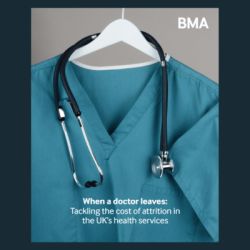Empirical studies indicate that COVID-19 cases may be most infectious during the presymptomatic phase of the disease, which baffles experts as this is rather 'unusual' in the progression of a respiratory infection. This kind of silent transmission has been the subject of two recent studies.
You might also like:COVID-19 Transmission Among Close Contacts
A study by a U.S.-Canadian research team (Moghadas et al. 2020) aimed to determine the contribution of presymptomatic and asymptomatic transmission regarding infectiousness prior to the onset of COVID-19 symptoms.
Based on empirical data, it is estimated that asymptomatic infections account for 17.9 to 30.8% of all infections. Based on these estimated values, the researchers set about to quantify the proportion of the attack rate associated with transmission during presymptomatic, asymptomatic and symptomatic phases.
This quantification was made using a series of scenario analyses to determine the level of isolation necessary for symptomatic or silently infected individuals, so as to keep the attack rate below 1%.
The research team found that the majority of transmission is due to silent transmission – a combination of the presymptomatic stage and asymptomatic infections. When 17.9% of infections are asymptomatic, the researchers noted that the presymptomatic phase and asymptomatic infections account for 48% and 3.4% of transmission, respectively.
As such, even if all symptomatic COVID-19 cases are isolated, a surge in outbreak may not be prevented. For example, in a scenario where silent spreaders and symptomatic cases are put in isolation, the researchers say over one-third of silent infections must be isolated to suppress a future outbreak below 1% of the population.
In this study, silent transmission has been found to be the primary driver of COVID-19 outbreaks, highlighting the need for mitigation strategies, such as contact tracing, that detect and isolate infectious individuals prior to the onset of symptoms.
Notably, delays in contact tracing increase the risk of further infection spread, given that asymptomatic individuals are generally unaware of their infection risk to others, and therefore are less likely to limit their social interactions.
In conclusion, the study authors say symptom-based isolation must be supplemented by rapid contact tracing and testing that identifies asymptomatic and presymptomatic cases, in order to safely lift current quarantine/lockdown restrictions and minimise the risk of resurgence.
The other study (Stubblefield et al. n.d.) focussed on asymptomatic healthcare personnel as a potentially important source of SARS-CoV-2 transmission. A cohort of healthcare staff at Vanderbilt University Medical Center (USA) underwent serological testing for the coronavirus developed by the Centers for Disease Control and Prevention.
The eligibility criteria included regularly being in direct patient contact with COVID-19 patients in various units of the centre, within one month of the first local COVID-19 hospitalisation. The 249 healthcare workers enrolled in the study included nurses (42.2%), providers (34.5%) as well as radiology technicians other staff.
In total, 19 (7.6%) tested positive for SARS-CoV-2 antibodies, but only 11 of them (57.9%) had reported prior symptoms of a viral illness, namely cough, sore throat and myalgias, while 7 (36.8%) believed they previously had COVID-19.
Notably, of the 19 healthcare staff only 7 had earlier tested for SARS-CoV-2 and only 3 of those had positive results. “This suggests that testing only symptomatic personnel misses a substantial number of SARS-CoV-2 cases among practicing healthcare personnel,” the authors write. They opine that widespread surveillance testing of asymptomatic and minimally symptomatic healthcare personnel may prove a useful strategy for containing the spread of COVID-19.
Image credit: Tomas Ragina via iStock
References:
Moghadas SM et al. (2020) The implications of silent transmission for the control of COVID-19 outbreaks. Proc Natl Acad Sci USA. Published online 6 July. https://doi.org/10.1073/pnas.2008373117
Stubblefield WB et al. (n.d.) Seroprevalence of SARS-CoV-2 Among Frontline Healthcare Personnel During the First Month of Caring for COVID-19 Patients — Nashville, Tennessee, Clinical Infectious Diseases, ciaa936, https://doi.org/10.1093/cid/ciaa936



























